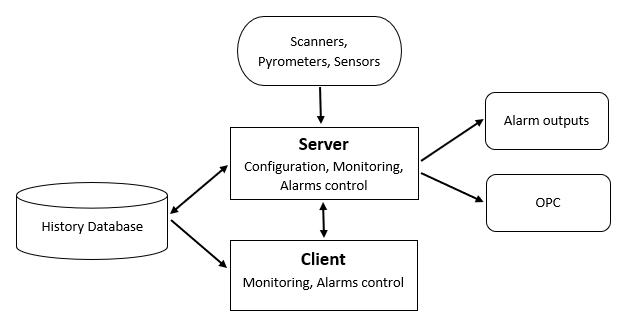The system is designed in a client-server structure. There is IRT KilnMonitor server that runs on a computer where monitoring instruments are connected to and IRT KilnMonitor client that connects to the server through a local area network and gets information about current state of the kiln.
Therefore, IRT KilnMonitor server runs the main system tasks, such as communicating with the temperature measuring devices (scanner, pyrometers), interpreting the incoming information, and interfacing with the digital output modules. Its other important task is serving the IRT KilnMonitor clients and OPC clients.
IRT KilnMonitor clients are designed solely for monitoring, their main duties are displaying the actual physical state of the kiln, as well as recovering historical data from the system. Furthermore, they permit the user to control the events (alarms and errors) that can show up in the system.
All monitoring functions are also present in IRT KilnMonitor servers.

IRT KilnMonitor server and IRT KilnMonitor client applications look pretty much the same:
·They use the same installation program. IRT KilnMonitor knows if it is a client or a server only by the license code used during installation.
·Program icon and program name in the system is the same - IRT KilnMonitor.
·Both the client and the server have monitoring functionality. The difference is that a server displays kilns which data it gathers directly, while a client needs help of a server to get kiln information.
·If you have IRT KilnMonitor server installed on a computer, you cannot install IRT KilnMonitor client.


